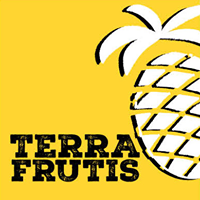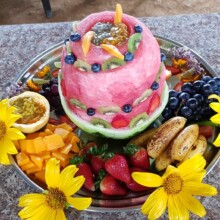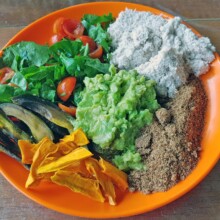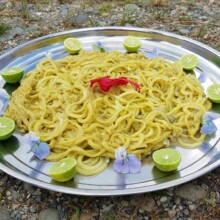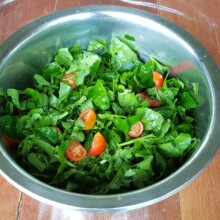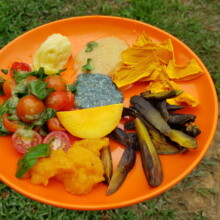Traveling
The first objective is to arrive in Ecuador. It is important for all to research specific requirements regarding travel to Ecuador from their respective countries! Cover all aspects, such as providing proof of onward travel and booking appropriate flight or bus tickets out of Ecuador for this purpose. For example: most airlines allow 24 hours to cancel a flight, which one may book the day of one’s departure from home and then cancel upon arrival (an other option, some of us used, is BestOnwardTicket); or one may choose a lower-risk option by purchasing a (non-refundable) bus ticket to Peru or Colombia in advance. Another method for providing proof of onward travel is to print a “fake” return-flight ticket. This is something that every traveler must research for themselves shortly before their departure as airlines can and do change the design of their tickets without notice. These examples open up one’s actual return/travel-on date options for a potential longer-term stay, but note that travellers utilise any option at their own risk. In general, we recommend that each individual utilise whichever option is most comfortable for them while facilitating a quick and safe journey.
Our land
The Terra Frutis project is located in south-eastern Ecuador, 18 km from Gualaquiza, on 136 hectares (330+ acres) of land which slopes upward towards a mountainous western border, with the eastern border being the Zamora river and then two smaller streams along the north and south as general locations for the other respective borders. The elevation is 720 meters at the river. The majority of the land is between 730-900 meters, and the top of the mountain is about 1200 meters.
Most of the food forest project is located on land used until some years ago as a cow pasture (in other words: grass). Right now there are about 40 hectares of open pasture land that we are systematically clearing and re-planting with food forest pioneers. This land can/will be re-forested with trees, shrubs, vines, and herbs that provide food in a sustainable way, using agroforestry practices that work with and encourage local wildlife species. There are also bamboo forest sections, which can provide supplemental material for numerous residences and utility buildings.
Access
The land is reachable by pick-up truck via a gravel road. To get to/from the town of Gualaquiza involves a 40 minute taxi ride, or a 40 minute walk to a nearby village and then a 20 minute bus ride. The bus from/to there is less than $1, catching a return taxi from there is $1 per person.
We send detailed directions to newcomers.
The road is a bit bumpy, if this will be an issue (e.g. you have a medical condition) contact us for information about taking a boat to Terra Frutis instead.
Accommodation and Facilities
We usually have plentiful rooms and/or private structures available for you to sleep in. You are also welcome to set up a tent, hammock, or other temporary accommodation. We do not charge for staying in our structures, but we do charge for utilities. We have: hot showers, hot water, a washing machine, a clothes dryer, blenders, dehydrators, a juicer, a cooking stove, a freezer, a fridge, internet, a hot tub. We also have a community center building for recreational activities or just hanging out.
Food from the land
At the moment, we usually have more than enough bananas (several cultivars) all year round.
Often we have papaya, plantains, jackfruit, canistel, rough lemons, naranjilla, hot peppers, and noni. Seasonally you may enjoy biriba/rollinia, peach-palm, abiu, guava, iñaco, peanut butter fruit, mandarins, starfruit, marang, ice cream bean, apai, and cacao. Sometimes soursop, pineapple, limes, miracle berry, cucumber, cherry tomato, squash, jaboticaba, breadfruit, and matoa.
We are constantly planting and have planted hundreds of fruit-bearing plants throughout the property including: durian, mangosteen, mamey sapote, canistel, breadfruit, white sapote, custard apple, blackberry jam fruit, matoa, tangelo, pomelo, avocado and more.
Beside fruits, we have a fairly good amount of katuk and turmeric, sugarcane, a little bit of taro and some cassava. Sometimes: tropical lettuce, sweet potato, ginger, jute mallow/molokhia, corn, and nuts.
It is currently not possible to get a healthy diet 100% off the land. So you’ll need to buy food. We either order food together to be delivered, or take a trip into town on market day. Our indigenous neighbours sell papaya and some other fruits.
Our Diet and Lifestyle
Our diet consists of predominantly whole plant foods: fruits, vegetables, nuts, seeds, grains, raw and cooked. Some edible mushrooms are foraged from the land. All vegan food is allowed, other than ultra-processed foods.
We refrain from the use of psychedelic substances / plant medicines, but private infrequent (maximum once every 3 months) use of such substances for spiritual practices is permitted. Hard drugs are not permitted.
We aim for an overall healthy diet and vegan lifestyle, please respect this when coming here. We recommend that you practice eating a healthy whole foods plant based diet, abstaining from drugs and psychedelics, and exercising before arriving here as this will smooth your transition to life at Terra Frutis.
Water
We have running water from a (year round) small spring on the land. We filter it with a ceramic water filter.
Compost
We use a composting toilet system much like that explained in the “Humanure Handbook“. We use food scraps and humanure composting as it is very effective and requires very little labour compared to other methods. In the future we hope to experiment with a biodigester, which can create biogas for a number of purposes and also yields excellent compost.
Local Fruit Prices
Here is an idea of local fruit prices. Naturally, those are subject to changes due to season, availability,…
- Avocados: 2-3 for $1
- Papayas: 1 for $0.75-$1.50
- Pineapples: 1 for $1.50-$2
- Regular bananas: 20-25 for $1
- Oritos (small bananas): 50 for $1
- Oranges: 6-10 for $1
- Passionfruit: 6-10 for $1
- Mangos: 2-4 for $1
- Watermelons: 1 for $3-$6
- Lettuce: $.50-$1/head
Seeds, Cuttings and Grafted Plants
We encourage you to bring exotic fruit genetics, as we are starting a biologically-diverse food forest which requires lots of fruit trees that we can’t source locally. Please check out our Plant Gift List.
Climate
Temperature is fairly steady throughout the year. The warmest month of the year is November with an average temperature of 23.8°C (73.84°F). The coolest month is July, when the average temperature is 22.1°C (71.78°F). Overnight lows tend to range from 16°C to 20°C. We have rarely seen as low as 13°C.
Cycling
The roads in the area are fairly conducive to biking around town. It is a bit hilly and bumpy where we are, so we’d recommend a mountain bike.
ATMs, banks and money
There are Visa and Mastercard ATMs in Gualaquiza. You can potentially also start an account at the local Bank of Loja (or another bank of your choice) and transfer some money there (again, the currency used here is the U.S. dollar). Please, let your bank know that you are travelling abroad so that your card will work here.
Medical care
Hospital Misereor in Gualaquiza is a very modern and well-equipped hospital. They have a natural birthing room. Most healthcare/treatment is free there. Purchasing travel health insurance is not required. No vaccines are mandatory for travelling to Ecuador. Yellow fever/malaria/leishmaniasis/etc are not problems in this area. There is a (low) risk of chikungunya and dengue. There is a risk of contracting parasites from food and water in this area, it is very cheap to be tested for them in Gualaquiza. There are both natural and more conventional treatments for parasites easily accessible.
In the case of medical emergency, the taxi fee to the hospital, and cost of medical supplies at Terra Frutis will be taken out of the security deposit.
Is it possible to make money there?
One can make money through a valuable artistic and creative endeavour or even manual labour. One can make an online income. We sometimes host events like the Amazon Fruit Festival which employs some community members. Also, there are some English teaching opportunities in the area, but only for those who are skilled at speaking Spanish, and the most money comes from private lessons. If you wish to make money here, it is necessary to study Spanish seriously and to have an entrepreneurial spirit. Cost of living is cheap here, and $1500/year is all you need if you are frugal and resourceful.
Visa and immigration
A three-month visa is extended free to foreigners from many countries, including USA. It can be extended to six months for approximately $150. Please note that unlike, say, Costa Rica, Ecuador does not have a “perpetual tourism” option wherein you can continually renew a standard tourist visa and legally live there indefinitely.
If you have a college degree you can get a 2 year professional temporary residency visa – no proof of work required, only the college degree, proof of income (can just be monthly deposits into a bank account, not necessarily from work) and some other paperwork. The fee for this visa is $500. A police report/identity history/etc must be procured from your original area of residence, and this is valid for only 3 months. An apostilled copy of your degree/transcript/etc are other requirements – you can do a google search to find the exact process, or contact an immigration attorney. After 21 months on the temporary residency visa, you can apply for the permanent residency visa more or less the same way.
Another option is to invest ~$40k in a CD or business in Ecuador, or in a piece of land/real estate.
A couple can have a baby in the country, and then both parents can apply for permanent residency based on their relationship to the child who will be a naturalized Ecuadorean citizen. Or, one can marry a Ecuadorean citizen.
All of these options require paperwork to be completed perfectly, and many long bus rides to the capital, delays, red tape, etc. It is often easier to pay an attorney or immigration facilitator ($500 or more) to do it all for you.
See also: “Ecuador Immigration! How to stay legally” on our YouTube channel.
Last updated on February 18, 2025
